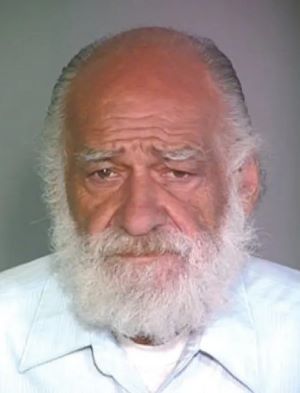When he moved to Yuma, Arizona, Thomas Collier Jordan probably took comfort in knowing that Mexico was less than 10 miles away. If police came sniffing around, he could hightail it across the border.
As he grew further into old age and death was in the rearview mirror, he probably took comfort in knowing that his black secrets would be buried with him under the sands of the Sonoran Desert.
Whatever his twisted thoughts, the truth finally caught up with him.
Thanks to the persistence and teamwork of the Hudson and Cuyahoga Falls police departments and the Ohio Bureau of Criminal Investigation, Jordan has been revealed in death to be the monster he was in life.

Specifically, he has been identified as the man who on Aug. 10, 1987, brutally raped and fatally stabbed 30-year-old Janice Christensen on a hike-and-bike trail in Hudson Township. Christensen had gone for a morning run and opted to keep her dog, Wolf, at home. Her husband, Ken, and Wolf found her body the next day.
Jordan also has been identified as the man who three months earlier — on May 25, 1987 — raped 17-year-old Michelle Puett-Howard at a Metropark in Cuyahoga Falls. The teen escaped with her life when she fought back and fled to the parking lot, where a police officer was ticketing her car.
Ohio Attorney General Dave Yost, Hudson Police Chief Perry Tabak and Cuyahoga Falls Police Chief Christopher Norfolk recently announced the finding, which allowed authorities to close the book on the 37-year-old cold cases.
Although police recognized similarities in the two cases, evidence conclusively connecting them proved elusive.
“The dedicated investigators in these cases were passionate about pursuing justice,” Yost said. “Their determination never wavered. When the technology was up to the task, they pounced.”
At the time of the crimes, the DNA revolution in crime-solving was still in its infancy. It was just the year before, in 1986, that DNA fingerprinting was first used in a police forensic test, in Leicestershire, England. And it would be several more years before CODIS, the FBI’s Combined DNA Index System, was introduced as a pilot project, and more than a decade before CODIS became operational.
In both cases, biological evidence had been obtained, but forensic scientists were unable to develop usable DNA profiles at the time. The cases eventually went cold but weren’t forgotten.
In 2020, Hudson detectives, buoyed by an arrest made in a decades-old cold case in neighboring Cuyahoga Falls, realized that advances in DNA technology might yield fresh insights into the Christensen homicide. So they turned to BCI’s newly formed Cold Case Unit for help.
Just months before the Hudson PD came knocking, Attorney General Yost had directed BCI to create a team dedicated full-time to re-examining cold cases involving homicide and/or sexual assault.
Previously, such cases were worked as time permitted, losing priority to new criminal cases.
Working with Hudson detectives, BCI’s Cold Case Unit reviewed similar sexual assaults and homicides throughout northeastern Ohio to determine whether Christensen’s killer was a repeat offender. That’s when they hit on the Cuyahoga Falls case of Michelle Puett-Howard.
The similarities between the Puett-Howard and Christensen cases were striking: Both victims were female, attacked on walking trails, bound by shoelaces and sexually assaulted. Also in both cases, a knife was used and the victim’s car keys were taken.
The evidence from the Puett-Howard case was resubmitted to BCI’s Richfield laboratory in 2022 and retested using the latest DNA technology. Thankfully, the evidence produced a full DNA profile, which was then entered into CODIS, yielding a match to the offender profile of Thomas Collier Jordan.
Jordan was born in Cleveland in 1926 and is believed to have arrived in Yuma around 2003. He died under hospice care in 2009 at age 83. Indigent, he was buried on the county’s dime in a barren, out-of-the-way patch of Yuma’s Pioneer Cemetery.
To confirm the DNA match, BCI agents traveled to Yuma in April 2024 to exhume his body and collect some of his remains for DNA testing. It matched DNA evidence recovered in both the Puett-Howard and Christensen cases.
In reviewing Jordan’s criminal history in Ohio, BCI agents learned that he was a career criminal. He was sentenced to prison in 1959 in Trumbull County for grand larceny; in 1961 in Cuyahoga County for burglary; in 1972 in Geauga County for malicious entry; and in 1976 in Geauga County for rape, stabbing and burglary — a conviction for which he remained in prison until 1985.
Two years later, he would attack both Puett-Howard and Christensen.
Authorities suspect that Jordan, given his criminal record, likely committed additional sexual assaults during his life. Besides Ohio and Arizona, he is known to have had ties to Nevada, California, Louisiana and Michigan. BCI has issued a bulletin to law enforcement nationwide in hopes that additional cases might be solved.
Special-Agent-In-Charge Roger Davis, who heads BCI’s Cold Case Unit, called the case “a perfect example of teamwork and dedication from investigators, analysts and scientists working together to find answers for Michelle and Janice and their family and friends.”
“This multidisciplinary approach brought together myriad perspectives, ideas, expertise and experience, all with the single focus of finding the person responsible for these heinous crimes.”